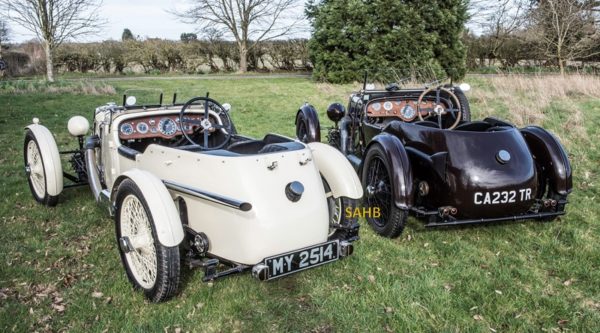
In the early years of the Le Mans 24 Hours race, the regulations required all cars over 1100cc to have at least four seats; smaller engined cars, of which at least 30 examples had been produced, could have just two seats. The significance of the rule was not so much the seats themselves as the fact that 60kg of ballast had to be carried for each ‘passenger’ seat. For the 1927 race, cars with engine capacities between 1100 and 1500cc were allowed to have just three seats, the reduced ballast giving a considerable advantage in power to weight ratio.
At the 1927 London Motor Show, Aston Martin introduced the all-new 1½-litre International in two basic models, the T-series with longer chassis for saloon and tourer bodies and the more sporty S-series whose chassis was lower and a foot shorter. Two- and four-seater versions were available on the short chassis. In 1928, Aston Martin entered two cars at Le Mans, the George Eyston / Augustus ‘Bert’ Bertelli car retiring after 32 laps with damage sustained after leaving the road while avoiding a slower car and the Jack Besant / Cyril Paul car going out with gearbox problems after 82 laps and 17 hours of racing.
These two 1929 Internationals are very rare cars indeed, only 12 having been built in that year, half of which were ‘sports’ models, and are believed to be the only two surviving to have the attractive Le Mans-style 3-seater bodywork. The maroon car, chassis S16, is currently domiciled in France, the property of Christophe Cluny who is a welcome if occasional competitor with the car at Prescott hill-climb meetings. The cream car, chassis S26, which is also to be seen at Prescott, belongs to Jim and Bruce Young, Jim being the registrar for pre-war cars for the Aston Martin Owners Club (AMOC). This car has an illustrious history, having first been owned by Bertelli himself. Later, when it was offered for sale in the showroom of Brooklands Motors in Great Portland Street, London, it was spotted by Mort Morris-Goodall who promptly bought it. When the salesman mentioned that the car had been built at Feltham, ‘just down the road’, he went straight there and sought out managing director Bertelli who advised him that, if he wished to pursue his interest in motor racing, he should begin by using the car in club trials. This he did and subsequently drove the car in events such as the London-Land’s End and London-Edinburgh trials before buying one of the ex-works race cars, LM7, and beginning a successful racing career. It was Morris-Goodall who later founded the AMOC.
The cars were photographed in 2017 at the Youngs’ Worcestershire premises.
Photo and text by Peter McFadyen. See his website: http://petermcfadyen.co.uk







Leave a Comment